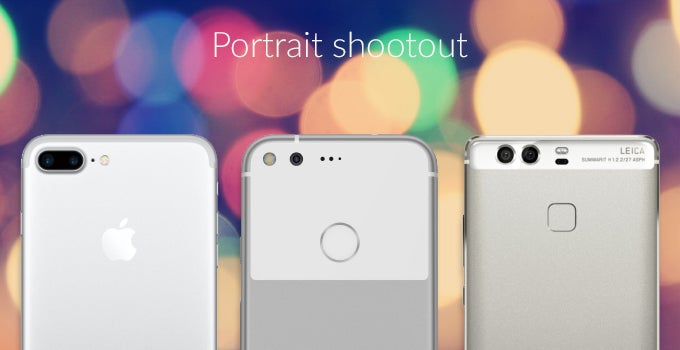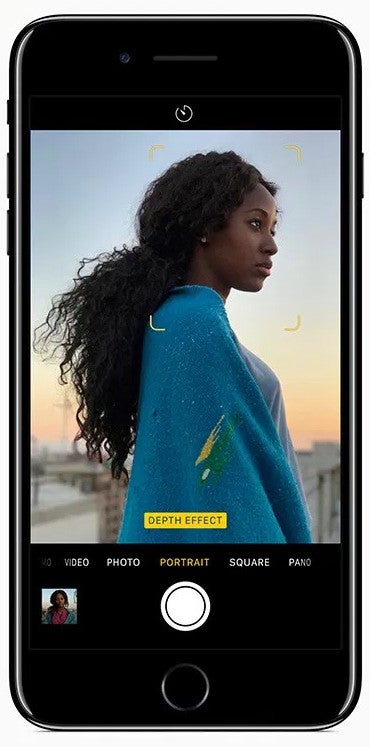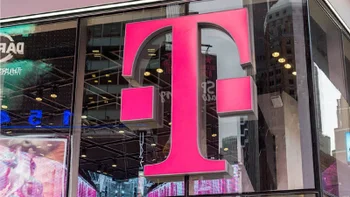iPhone 7 Plus vs Google Pixel vs Huawei P9: Portrait shootout


Apple misses no opportunity to tout the iPhone 7 Plus' Portrait mode, but is it really the best option out there?
Google Camera also offers a similar feature in the form of the “Lens Blur” option. We're still not sure whether this is intended for close-ups, or portraits, or both, but it sure is... “unique”. It differs from the solutions offered by the P9 and the iPhone 7 Plus, in that it requires you to move your phone upwards to create the bokeh effect, and it's just not very good. At times, it is capable of rendering an impressive-looking effect, but it's rarely applied accurately and consistently enough throughout the image to be considered desirable. Sometimes, one portion of the photo might be nicely blurred, while another – sharp in focus; other times, the wrong part is blurred or nothing is in focus at all. But we will give it a chance either way.
So, let's take a look at which phone takes the best, most bokehlicious portraits – the iPhone 7 Plus, the Google Pixel, or the Huawei P9?
Scene #1
Note: Unless stated otherwise, the images have been shot from the same distance and height with all three phones. The difference in framing comes from the fact that the iPhone 7 Plus uses its second telephoto lens at 2x zoom in Portrait mode, thus resulting in a more zoomed in image.
iPhone 7 Plus: Here, the iPhone 7 Plus fares quite well. With a few minor exceptions, it manages to isolate subject from background well enough, with close to nothing in the way of “seams” around the model.
Huawei P9: This is the result the P9 produces using the default aperture setting for this mode, which f/4.0 in this case. The virtual aperture can be adjusted from f/16 all the way down to f/0.95, but I decided to leave it at its default value for this shot. Albeit slightly unnatural looking, I like the result, as it is somewhat reminiscent of what some people refer to as a “bokeh panorama”, or what would be produced by a medium format camera at this distance, though it wouldn't be as blurred. Moving the aperture slider down makes the DoF simulation comparable to that of the iPhone 7 Plus, but then the glowing edge on the model's left leg becomes more pronounced.
And sure, I could have taken one more — or maybe two or three — and one of them would have probably turned out well, but what would be the point?
Scene #2
iPhone 7 Plus: The image from the 7 Plus looks like it's been taken at a closer distance, because the phone uses its telephoto lens at 2x zoom for Portrait mode. I couldn't match the framing to that of the other phones due to environmental obstructions, and the fact that the iPhone needs the subject to be within 2.5 m for Portrait mode to work. Other than that, the resulting image looks alright, with the exception of some light seams around the model's arms.
Huawei P9: Again, the effect is a bit too strong on the default setting, but that can be adjusted to the user's liking. What can't be adjusted though, is how the model's lush, curly hair is devoured by background blur.
Google Pixel: After three attempts where there was no blur produced at all, because I apparently didn't move the Pixel up slowly enough, I finally got this. Yeah, no.
Google Pixel: After three attempts where there was no blur produced at all, because I apparently didn't move the Pixel up slowly enough, I finally got this. Yeah, no.
Scene #3
iPhone 7 Plus: The blurring effect produced by the iPhone 7 Plus is so subtle, it's almost unnoticeable. Although there is nothing wrong with how the effect is rendered precision-wise, it might as well not be there at all.
Huawei P9: The DoF effect here is quite pronounced again, but it is at least fairly accurate. Reducing the intensity of the effect could potentially improve the look of the image, or at least parts of it.
Google Pixel: Pixel, you're drunk.
Huawei P9: The DoF effect here is quite pronounced again, but it is at least fairly accurate. Reducing the intensity of the effect could potentially improve the look of the image, or at least parts of it.
Google Pixel: Pixel, you're drunk.
Scene #4
iPhone 7 Plus: Due to the persistent 2x zoom on the iPhone, it was hard to get both the model and background in frame, and at the same time meet the 8 ft distance requirement for Portrait mode to work it magic. It's a simple scene and the iPhone does a good job.
Google Pixel: The Pixel does an adequate job in this scenario, most likely because the background is a clear sky. Apart from the aforementioned distortion caused by its shorter focal length, and the way it blurs some strands of hair, the Pixel does somewhat well here. For once.
Conclusion
None of the phones do a perfect job at emulating a shallow depth of field. The iPhone 7 is good at separating subject from background, but it doesn't render a very impressive bokeh (the spheres of light in the out-of-focus areas). The Huawei P9, conversely, renders the effect quite well — albeit too blown out on the default setting — but isn't as good at telling where the subject ends and the background begins. The Google Pixel is just meh. Google should either improve the feature or remove it completely from the camera app.
All in all, these modes offer some fun ways to experiment with your smartphone's camera, that may even produce good-looking results occasionally, but shouldn't be taken too seriously for the time being. We'll see where 2017 takes us.
PhoneArena recommends:
Follow us on Google News















Things that are NOT allowed:
To help keep our community safe and free from spam, we apply temporary limits to newly created accounts: